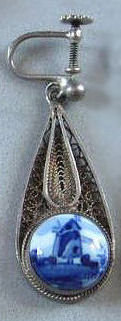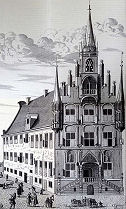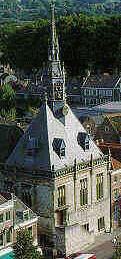
Verwoerd Ceramics Online
|
|
|
Delft Jewelry Delft is not a Factory. Delft is a style. In the 16th century, potters from Faenza in Italy spread tin-glazed earthenware (majolica) skills to France, Spain, and the Netherlands, where it became known as faience. From Antwerp the technique spread to England, and the English in the 17th century named Dutch faience Delftware, after its main centre of production. Although the city of Delft gave its name to “blue Delft”, and one of the few surviving Delft factories, the “Porceleyne Fles” is based in Delft, several other Dutch cities had similar potteries as well. Throughout this site we use the word “Delft” in combinations like blue Delft, and Delft jewelry for Delft style earthenware made in the Netherlands. We reserve “Delftware” for referring to Delft style pottery produced elsewhere, or for a collection of unknown or mixed origin. Delft Jewelry - or Delft Jewellery, if you prefer the BE spelling - is the common name for jewelry featuring miniature Delft medallions in a silver setting. Delft jewelry includes necklaces, pendants, earrings, brooches, bracelets, rings, and cufflinks. If you want to go directly to our “Compact Guide To Delft Jewelry Signatures” click here. |
 |
 |
Gouda,
a major centre of Delft pottery |
|
Schoonhoven,
silver city |
 |